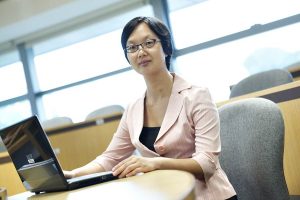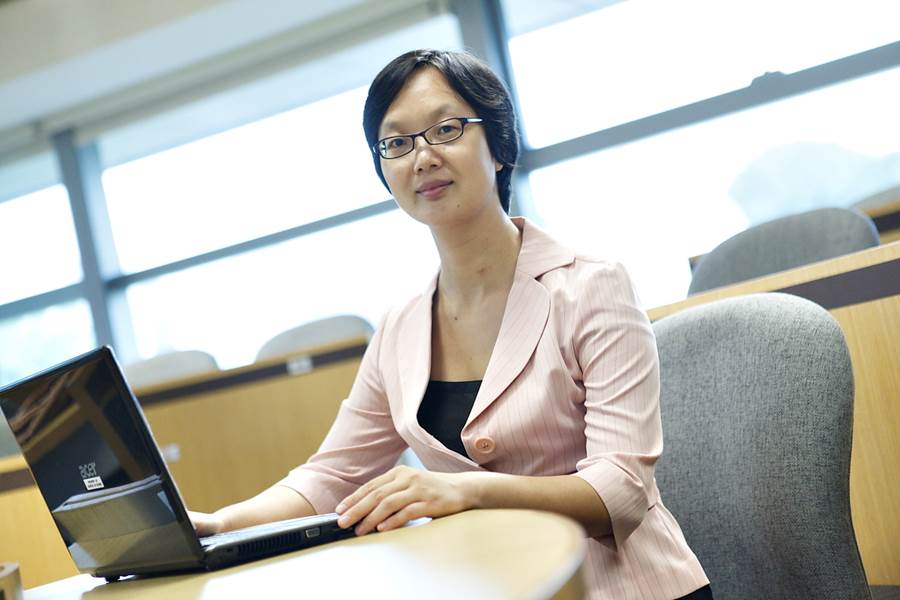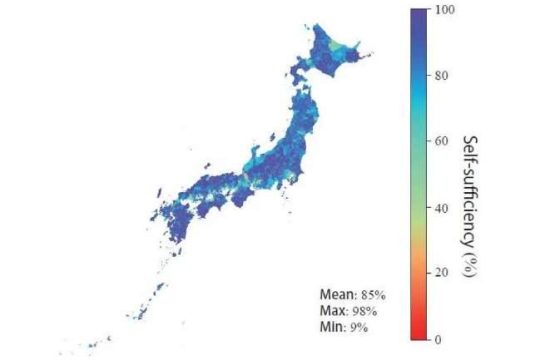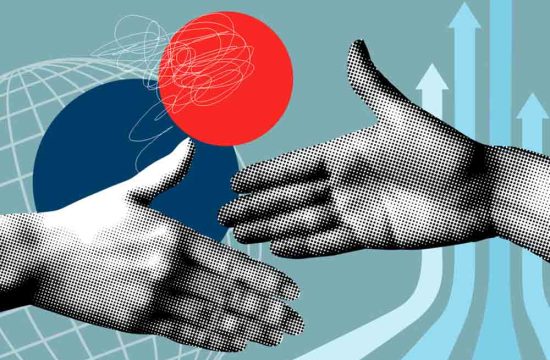Researcher from Singapore Management University creates econometric models that account for an economy’s real-life complexity without sacrificing the integrity of the story told.

SMU Office of Research & Tech Transfer – The stories of an economy – why it grew or didn’t, why it created jobs or didn’t – are often contested. By politicians, of course, but especially by economists whose job it is to explain an economy’s history and predict its future.
Part of the controversy stems from the difficulty of proving economic theories with real data. Economic variables – employment rates, investment rates and exchange rates – pull at each other from many angles. Like a hundred-stringed puppet, it is hard to measure which string is causing a wave or a jump.
As an undergraduate who loved economics, even Professor Jin Sainan, of the Singapore Management University (SMU) School of Economics, was puzzled by the assumptions in economic models and wondered whether they applied in real life. She found the way to answer these questions upon arriving at Yale University as a PhD student: econometrics.
“I took a series of advanced econometrics courses from two of the best econometricians in the world: Professors Peter Phillips and Don Andrews. They opened up the beautiful world of econometrics to me and brought me to the frontier of econometrics research,” she recounts.
Making sense of real world data
Econometric models use such data, explains Professor Jin, to investigate economic relationships between economic variables, verify economic theories, and forecast possibilities.
Her research focuses on improving the ability of these models to cope with the complexity of real life economics. The challenge is to do this while maintaining the integrity and robustness that simplification and assumptions provide in standard economic models, says Professor Jin. This is especially difficult when analysing large dimensional panel data – multi-dimensional data that stretches across individuals, countries and time periods and all the ways in which they influence each other.
But drawing out the factual patterns in these data sets is one of Professor Jin’s specialities. “It’s rewarding to build new econometric methods that bridge the gap between abstract economic theory and the real-world data,” she says.
Professor Jin has used her expertise to design econometric models to explain economic phenomena, such as the ‘fear of floating’, as demonstrated by monetary authorities who have ostensibly implemented a floating exchange rate. ‘Fear of floating’ occurs when countries report a floating regime but actually intervene to smooth exchange rate fluctuations.
In a 2009 paper, titled “Discrete Choice Modeling with Nonstationary Panels Applied to Exchange Rate Regime Choice” and published in the Journal of Econometrics, her models supported existing theories that fixed regimes are preferred by countries with smaller size, weaker government, more concentration in trade, and more foreign denominated liabilities.
Providing new evidence for longstanding debates
Together with SMU colleague Professor Su Liangjun and Professor Zhang Yonghui from Renmin University of China, Professor Jin developed a new model to help solve a long-running disagreement between economists.
For many years, alternative theories have sought to determine the relationships between an economy’s initial condition and its long-run growth, and between economic growth and capital accumulation.
As far back as the 1950s, economic models have shown a negative relationship between an economy’s initial condition and its growth – that is, the worse the start, the faster the growth. But competing models tell a different story. They emphasise the role of endogenous – or internally driven – growth, created by investment in talent, knowledge and innovation.
According to endogenous models, initial economic conditions do not affect long-run economic growth. Similarly, the two camps disagree over the nature of economic growth’s relationship with capital accumulation. The former sees no correlation and the endogenous camp sees a positive relationship. Both sides can cite empirical data to support their theories.
The problem with these previous studies, says Professor Jin, is that they use linear models – they assume a consistent relationship between the variables over time. But no economic theories suggest that the relationships are linear, she notes.
A new way to understand complicated relationships
To overcome this deficiency, Professor Jin and her colleagues developed a test for the existence of linear relationships in large dimensional panel data about economic growth – GDP, employment and investment rates and so on. They applied their new test to panel data covering 104 countries over 50 years (1960-2009), examining in each country the relationship between its economic growth and its initial economic condition. They also tested the relationship between a country’s economic growth and its capital accumulation.
This was a “very technically involved” process, says Professor Jin, adding that many challenges surrounded the dynamic structure of the panel data models, which included dependence across time as well as across cross-sectional units. But the result was important in that it provided a new way to look at the relationship between an economic starting line and subsequent performance and growth, she says.
“We found that the relation between a country’s economic growth rate and its historical rates are nonlinear. We also found strong evidence of nonlinearity in the relationship between a country’s economic growth rate and its initial economic condition as well as its investment share.”
The findings, which were published in a 2015 paper titled “Specification Test for Panel Data Models with Interactive Fixed Effects” in the Journal of Econometrics, provided a significant contribution to attempts to explain how economies work. By avoiding the use of linear models to analyse relationships that are nonlinear in real life, Professor Jin says economists can avoid estimations that might be “completely misleading or invalid”.
More generally, Professor Jin says her research in this area will help economists develop more reliable models that better account for the most significant factors driving an economy. “Although economic theory dictates that some economic variables have a stronger causal effect than others, rarely do they state exactly how the variables should enter a statistical model.”







